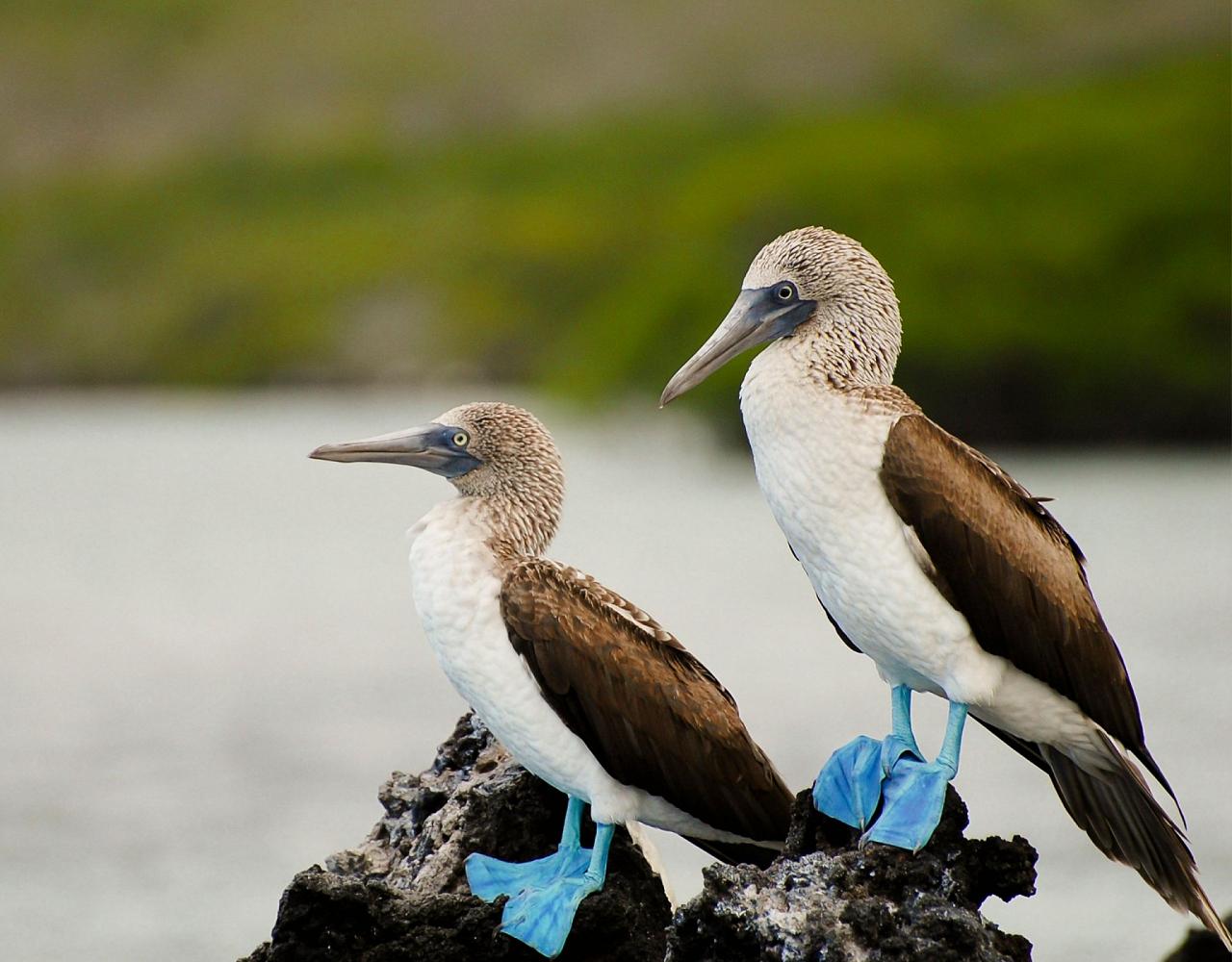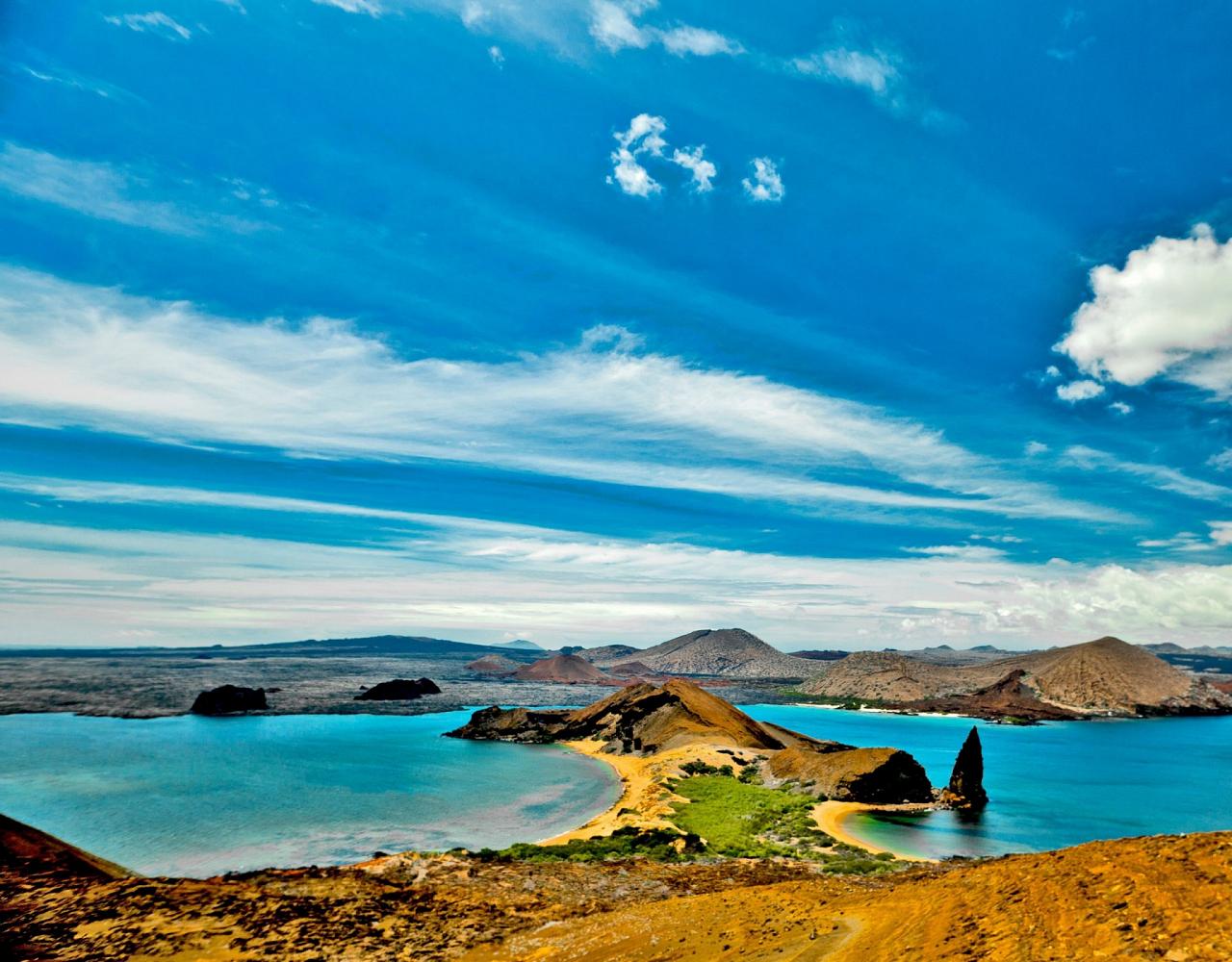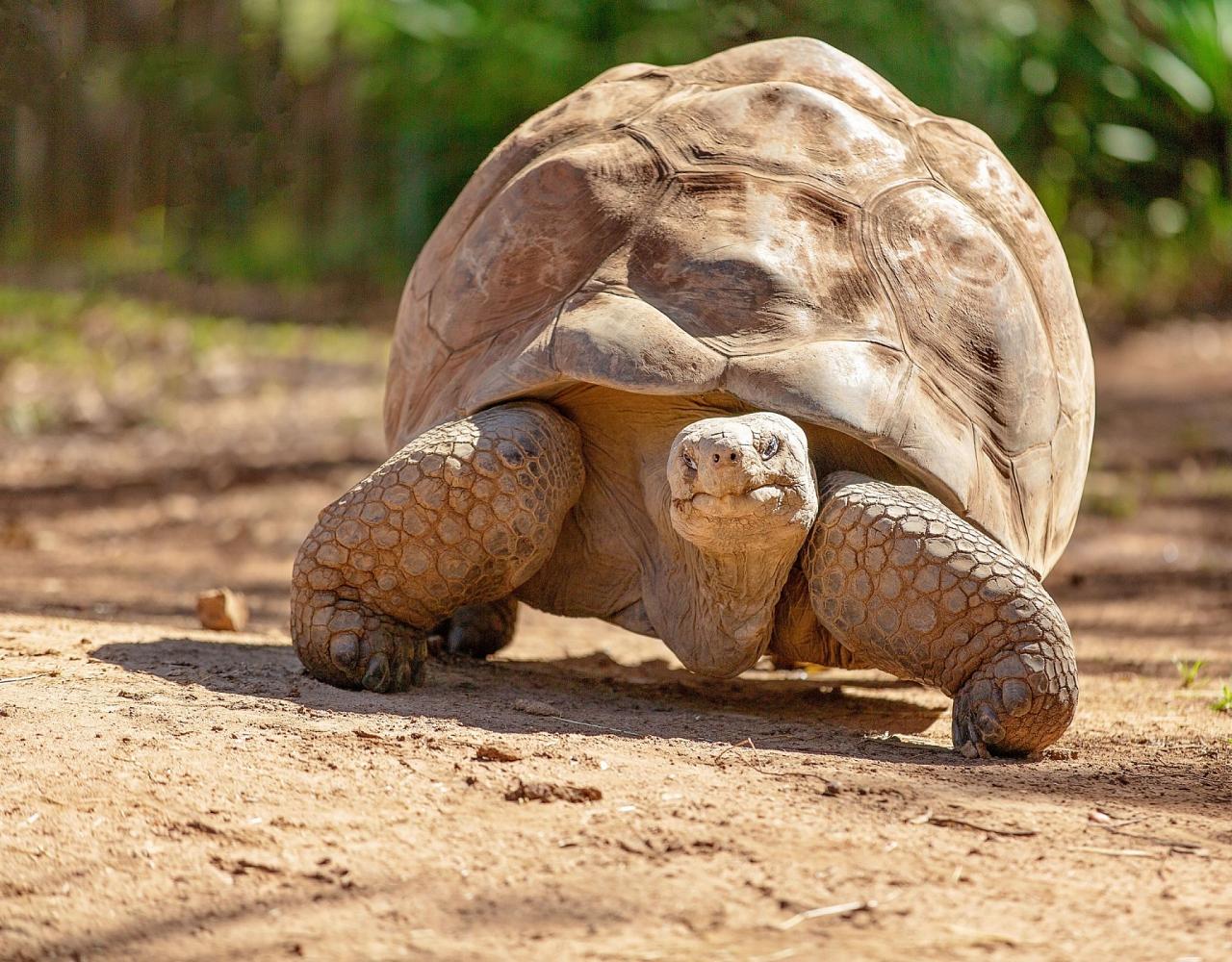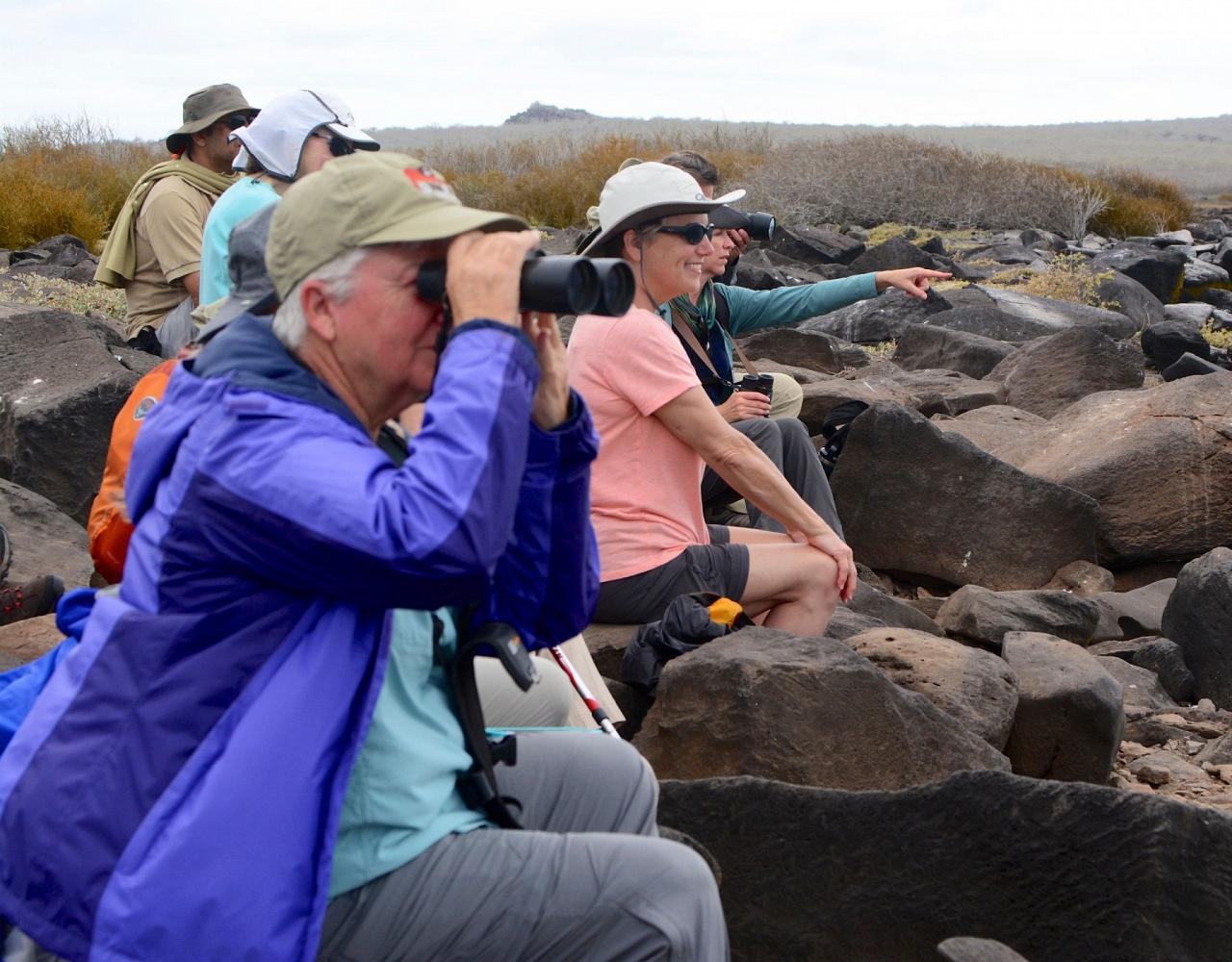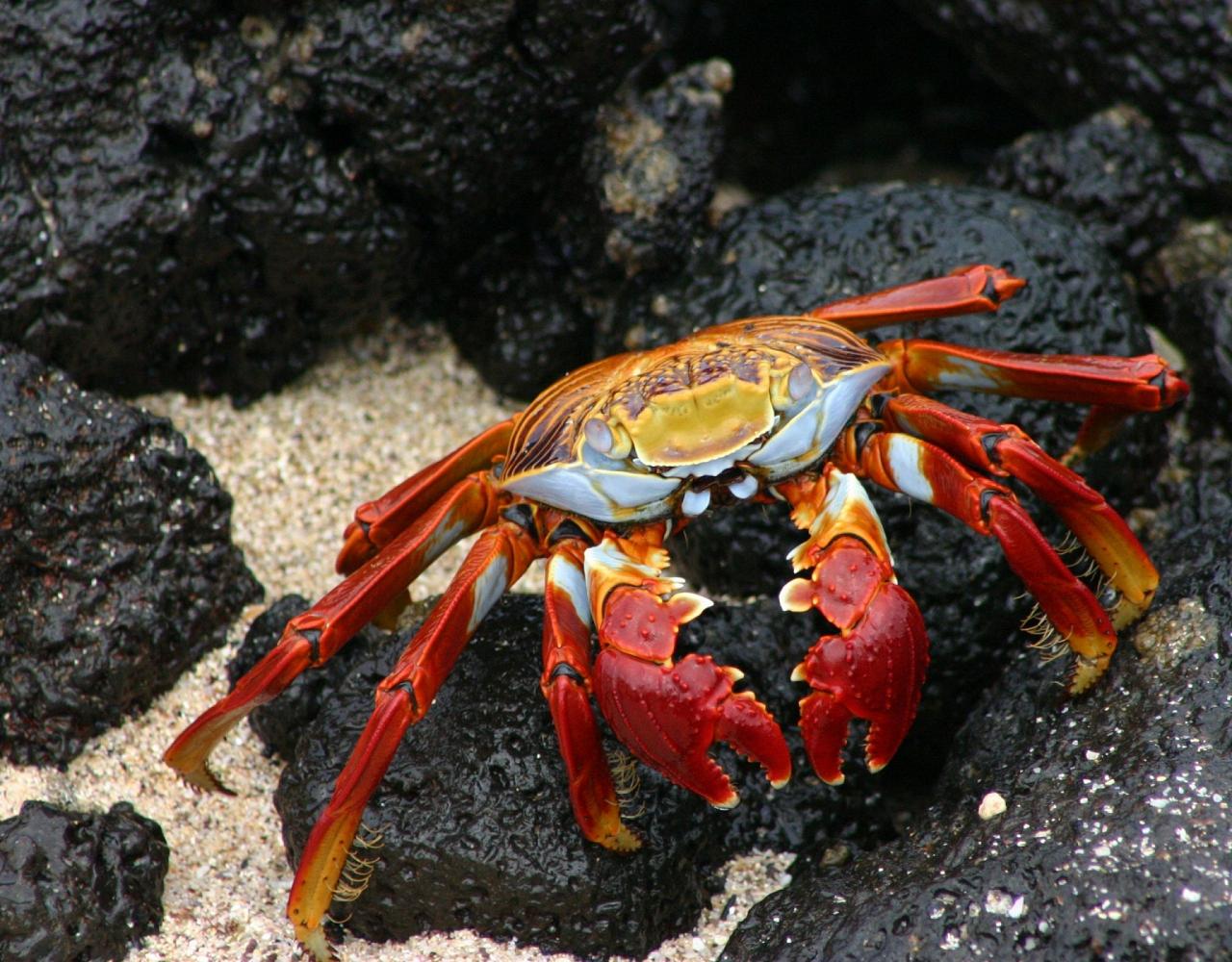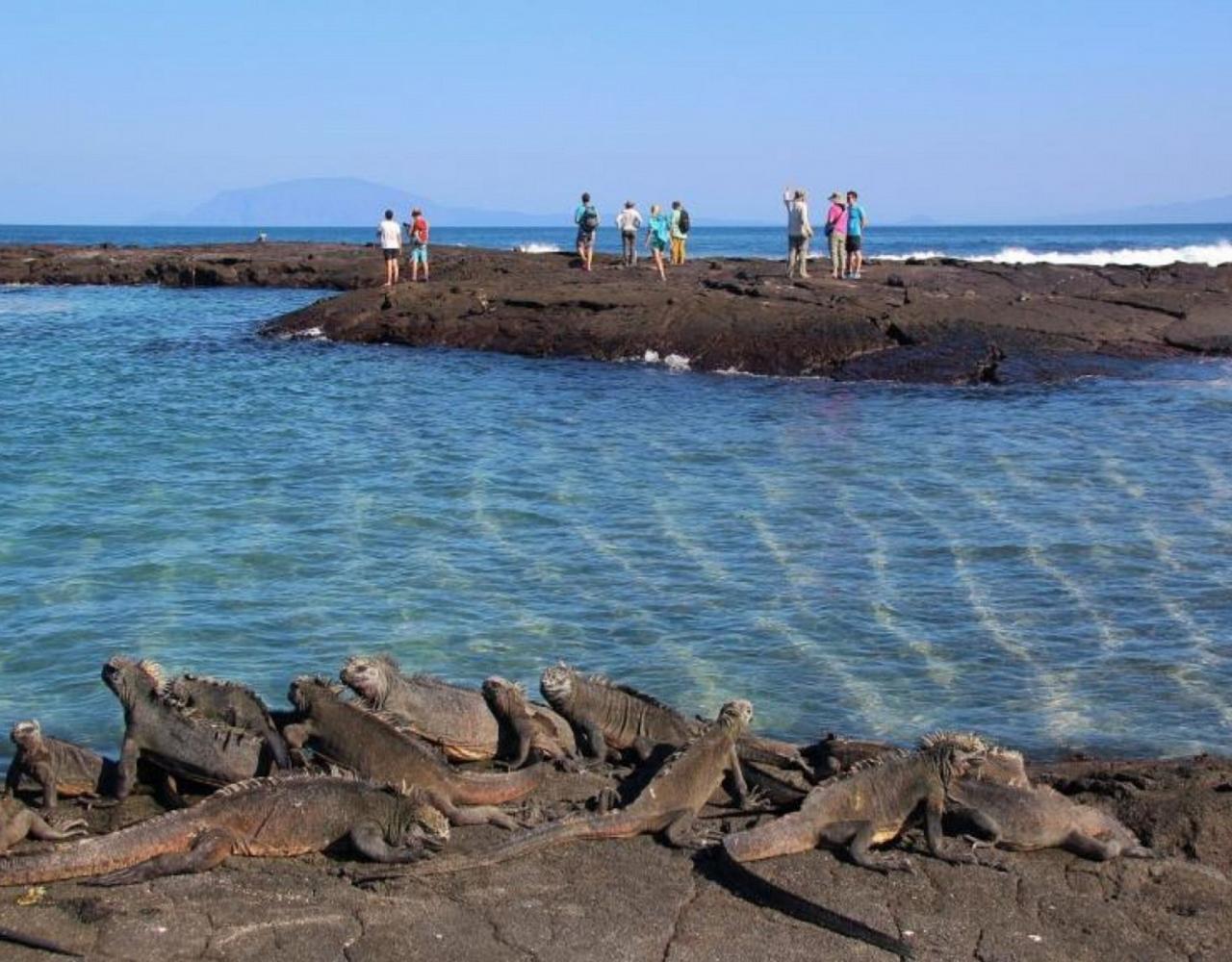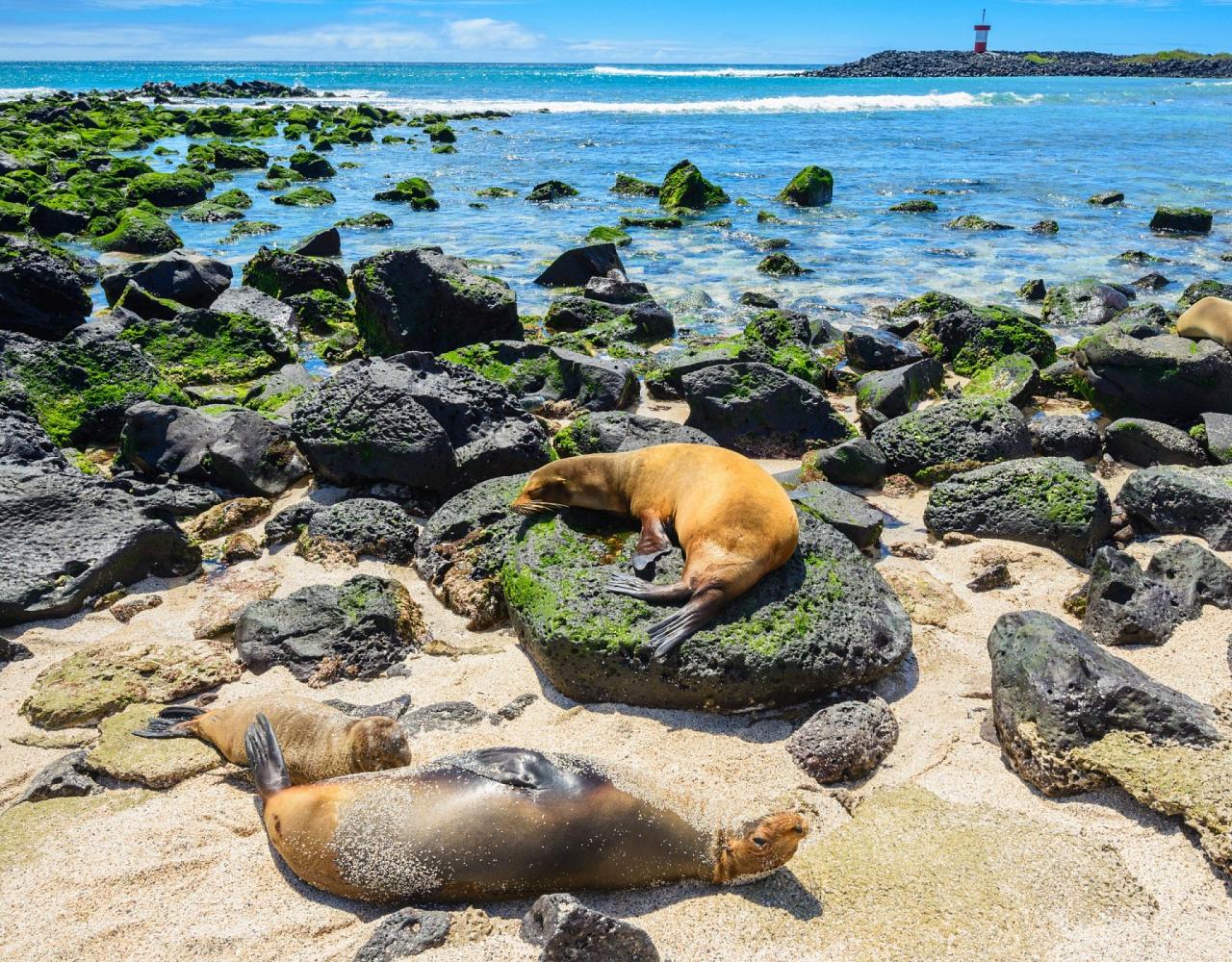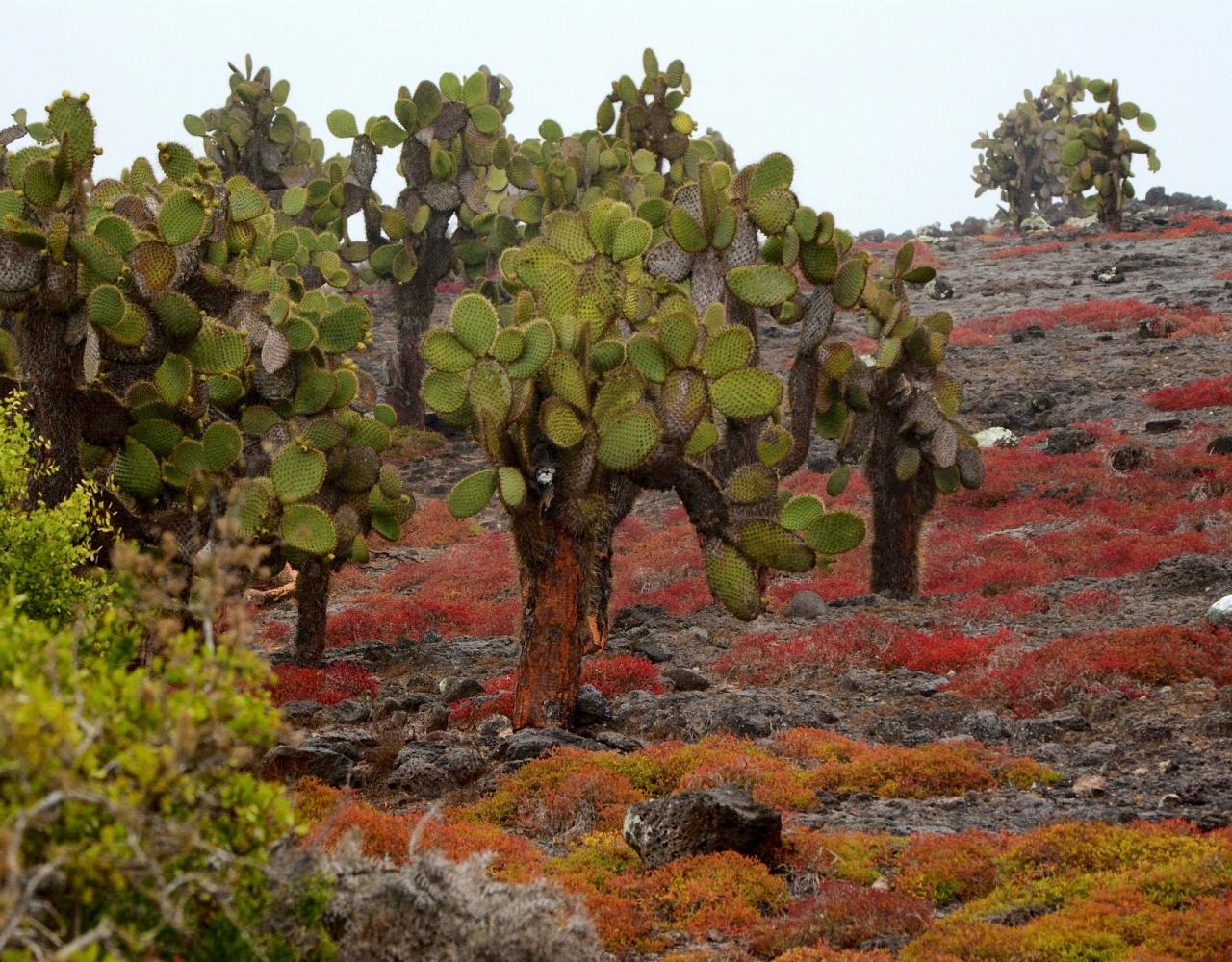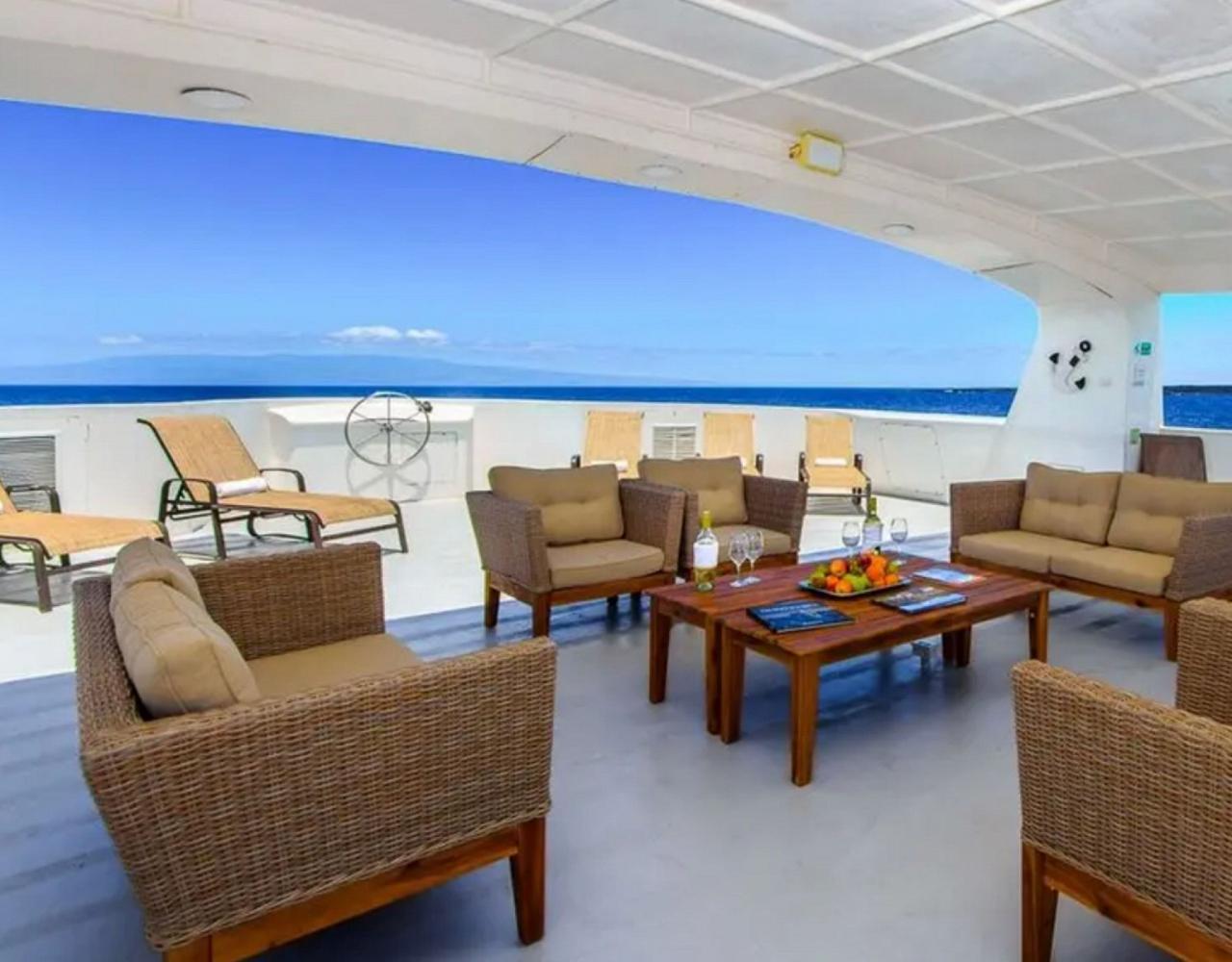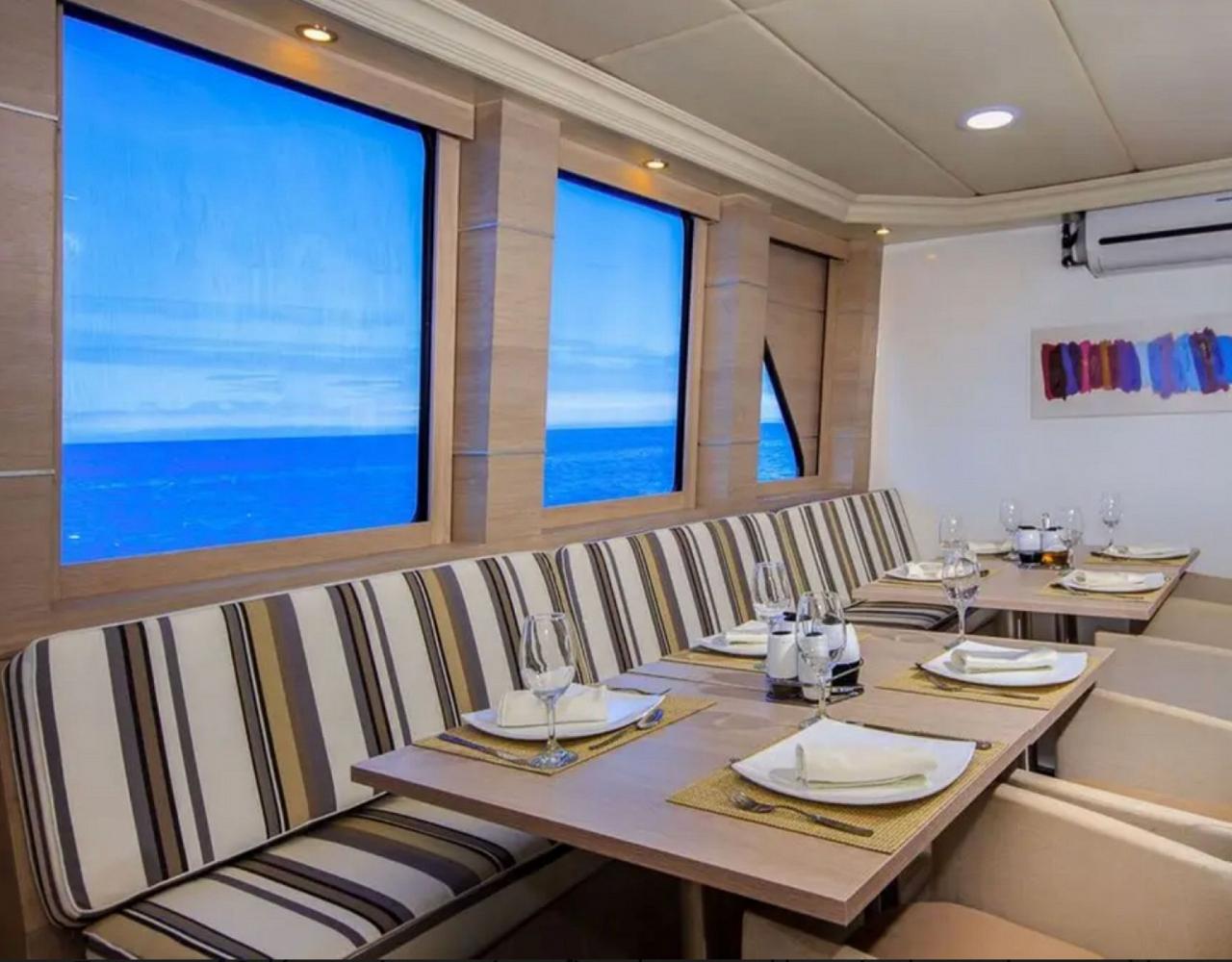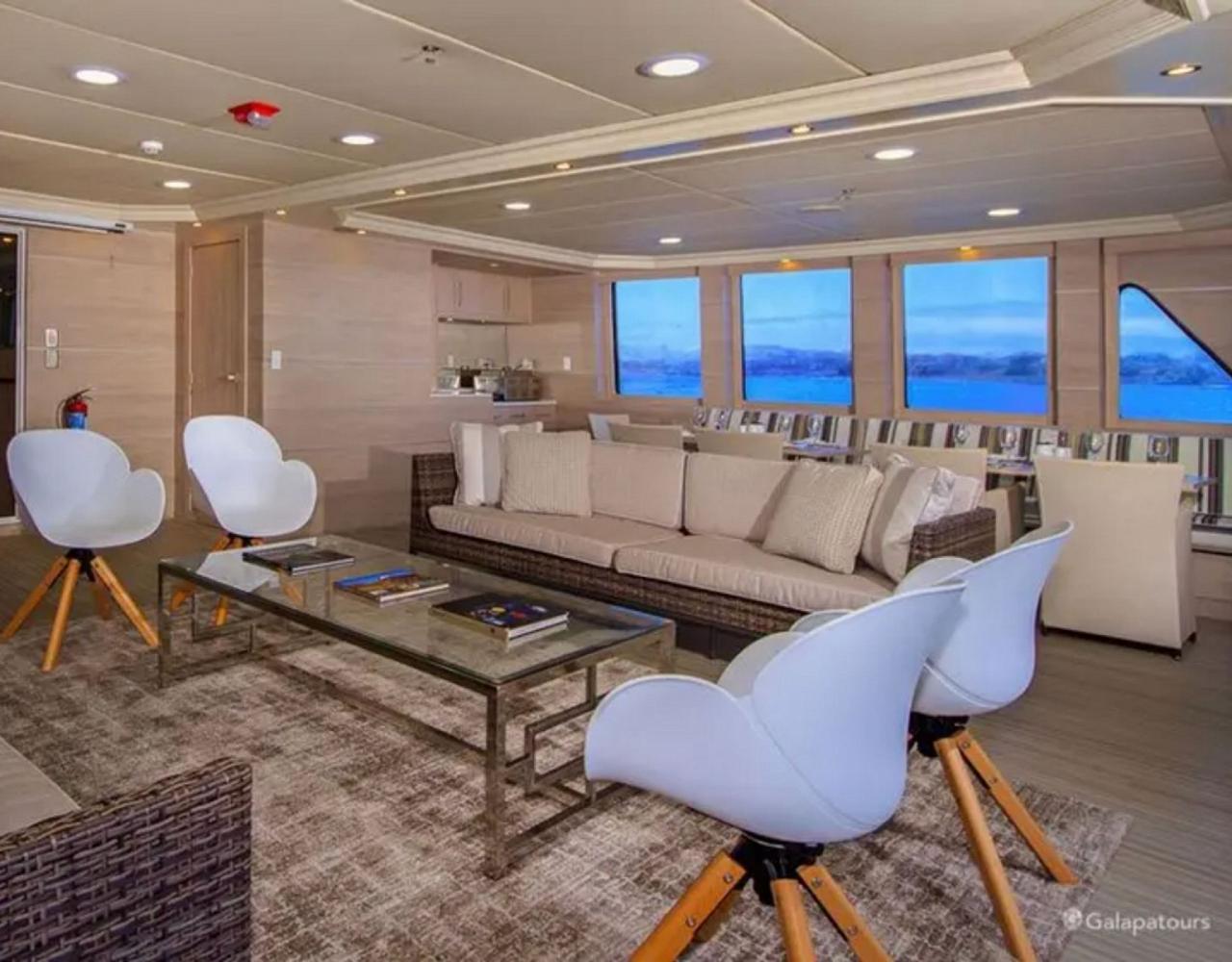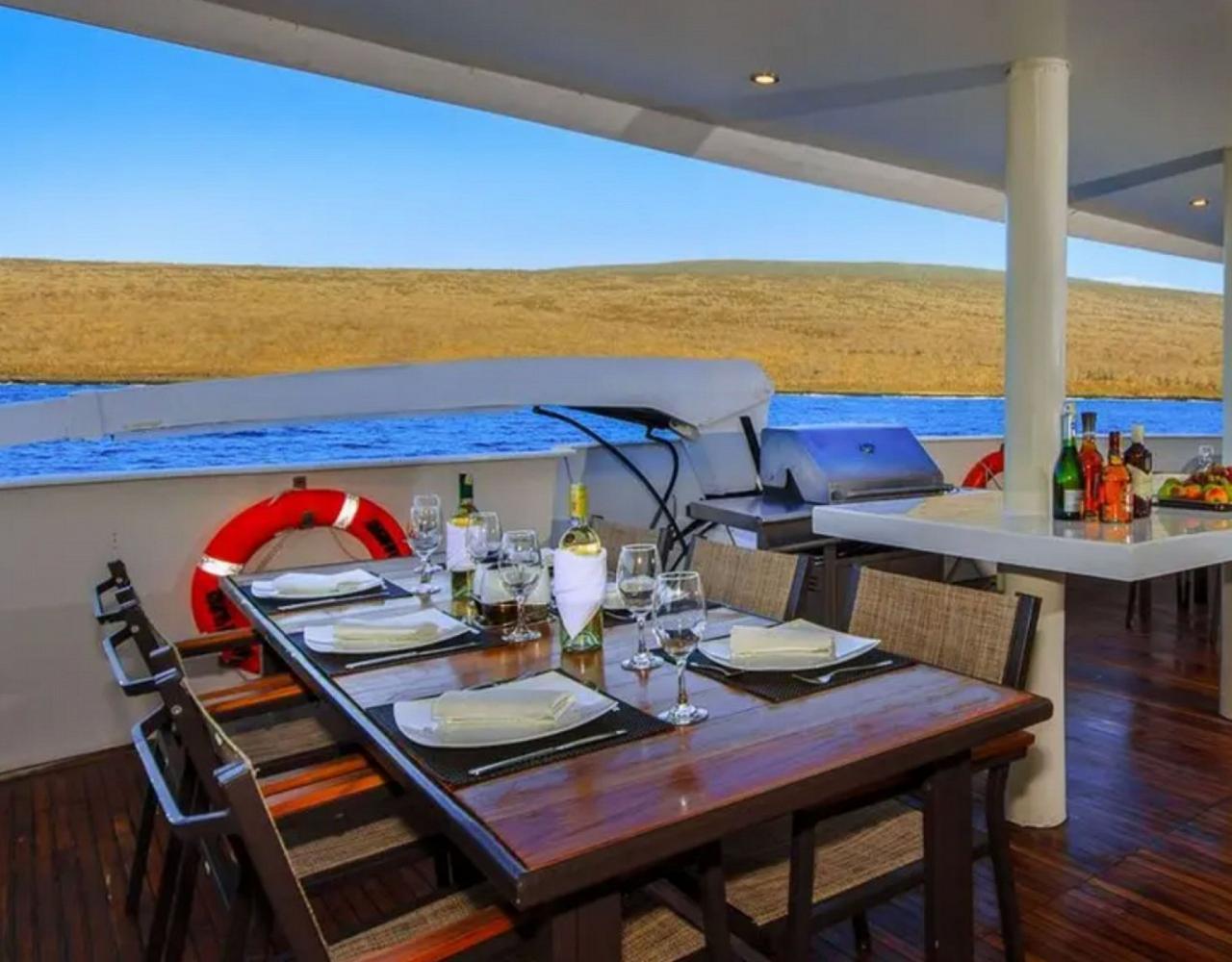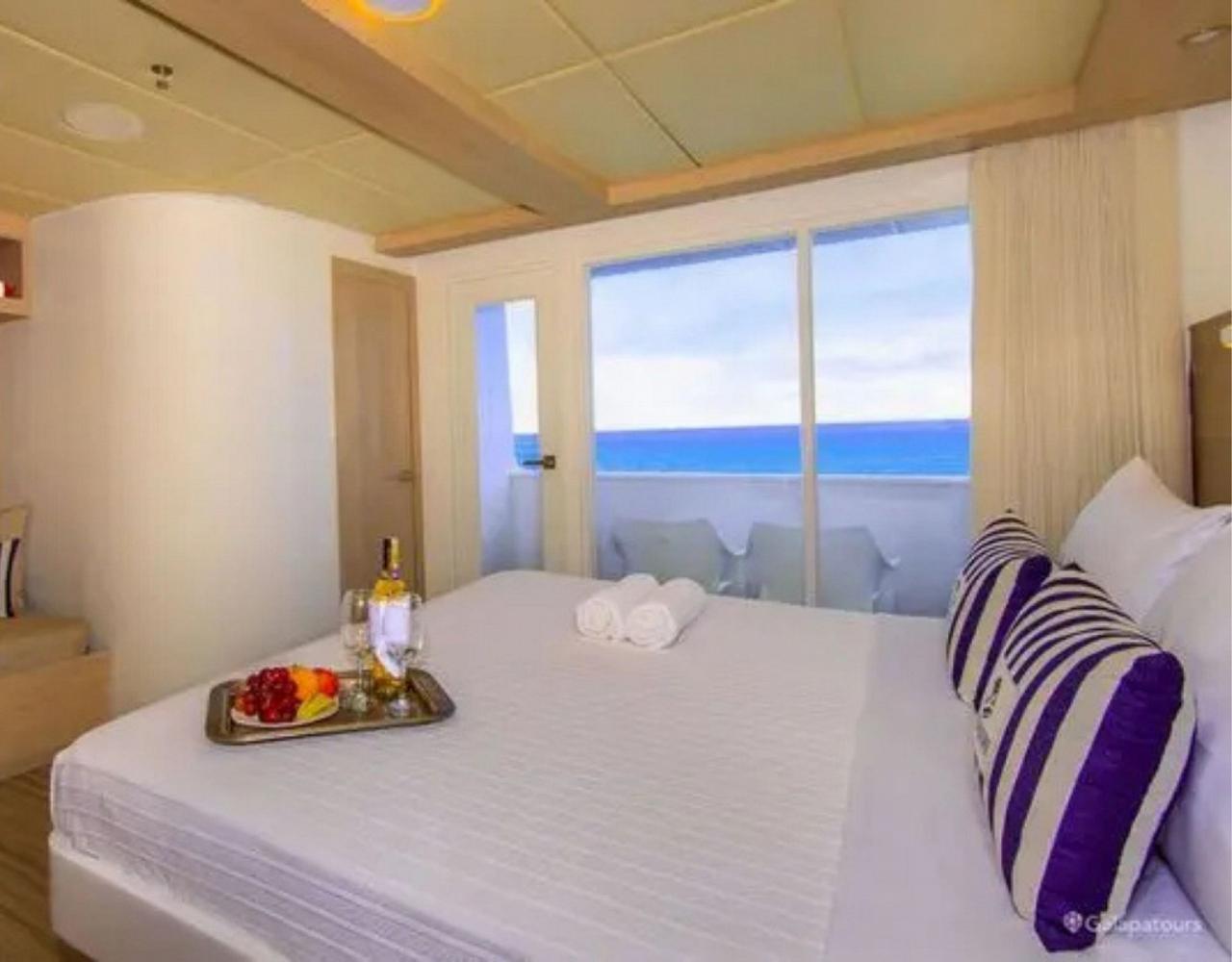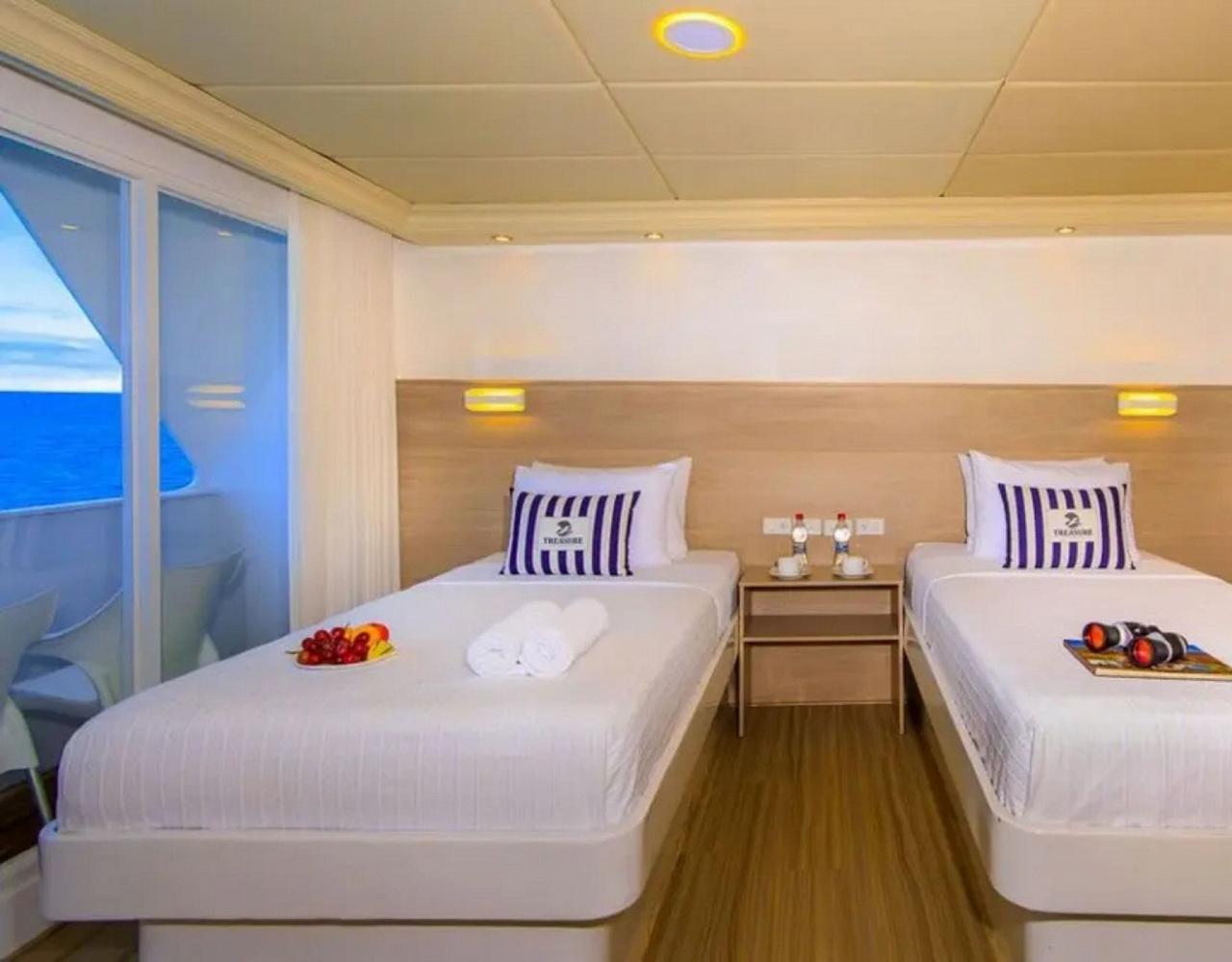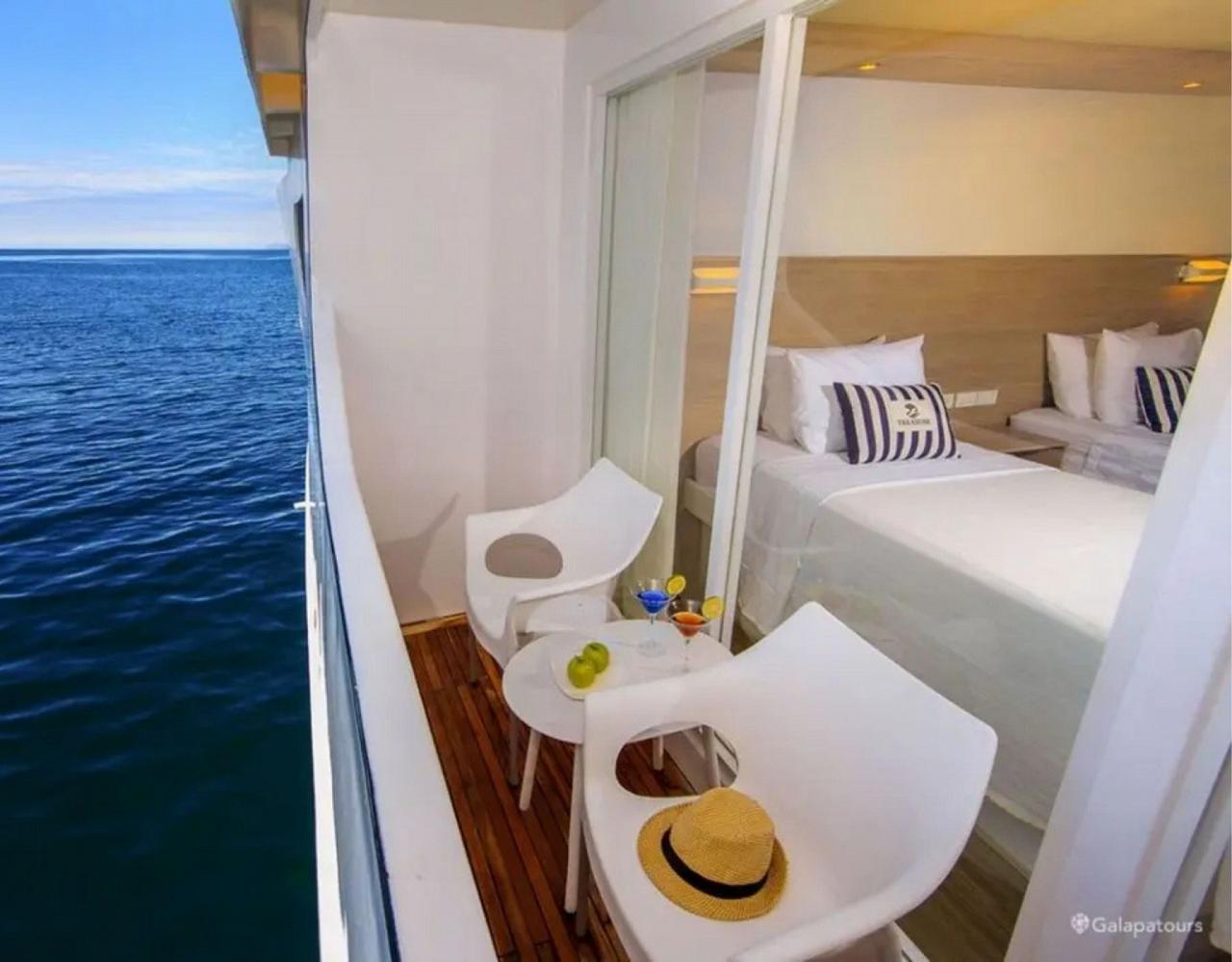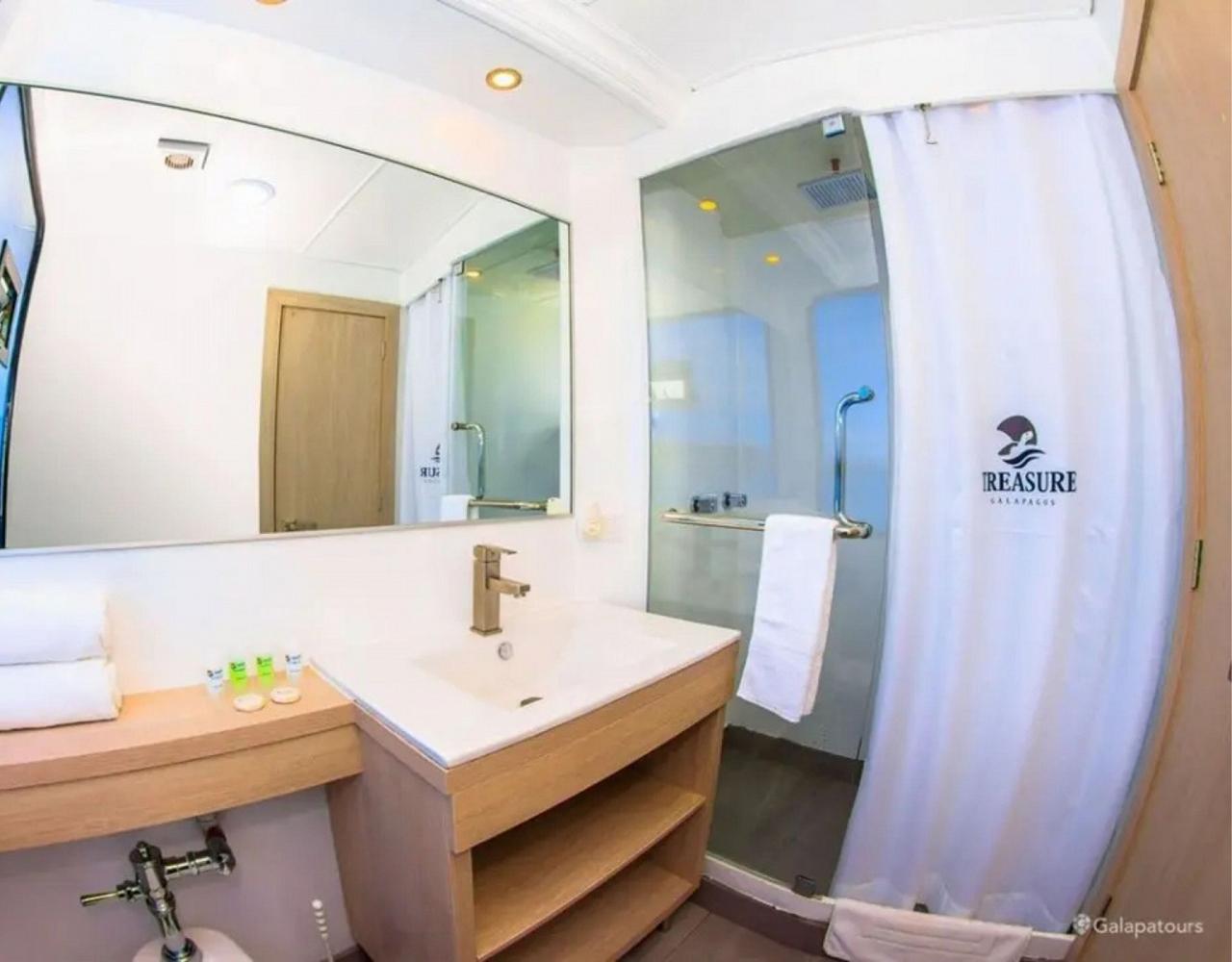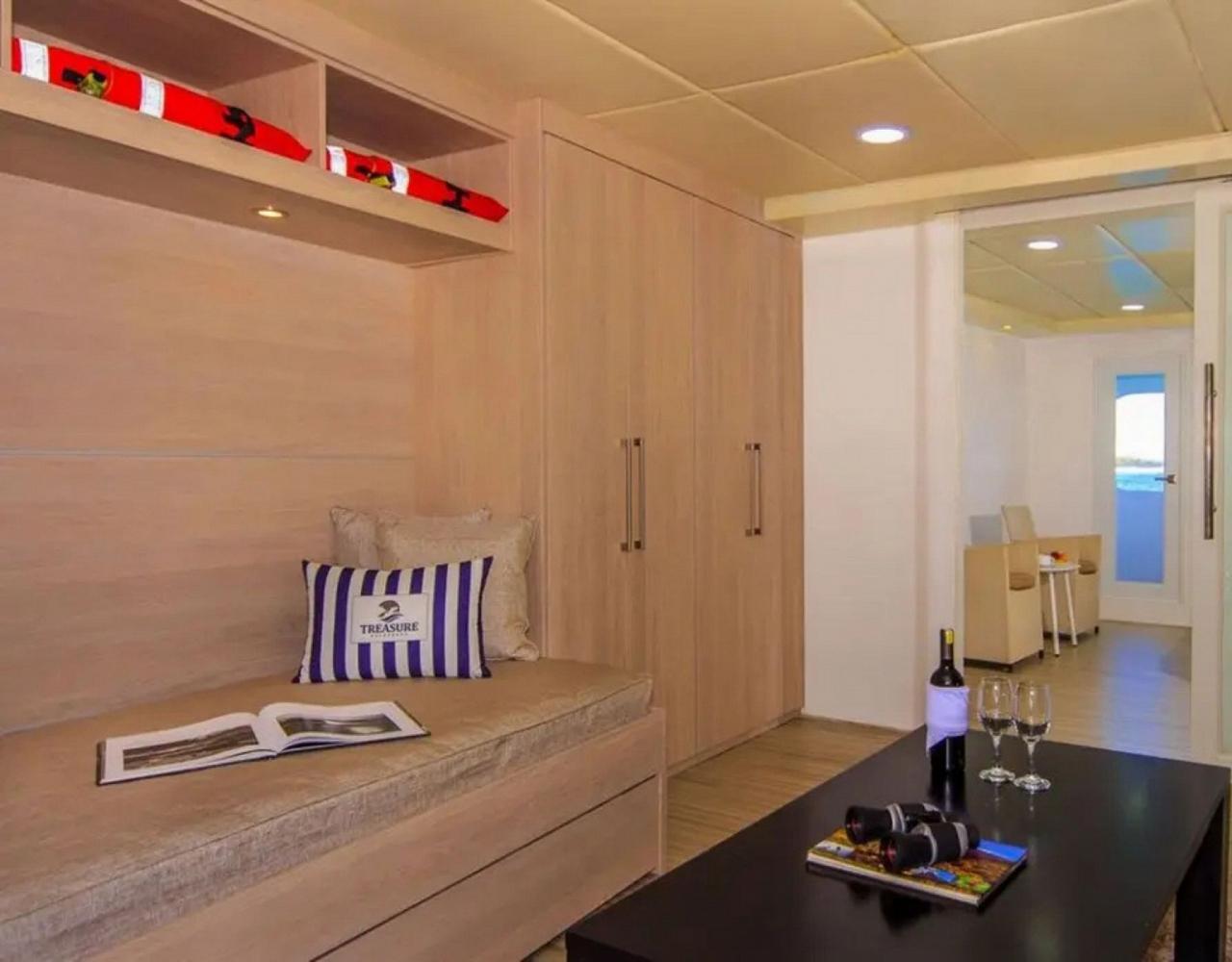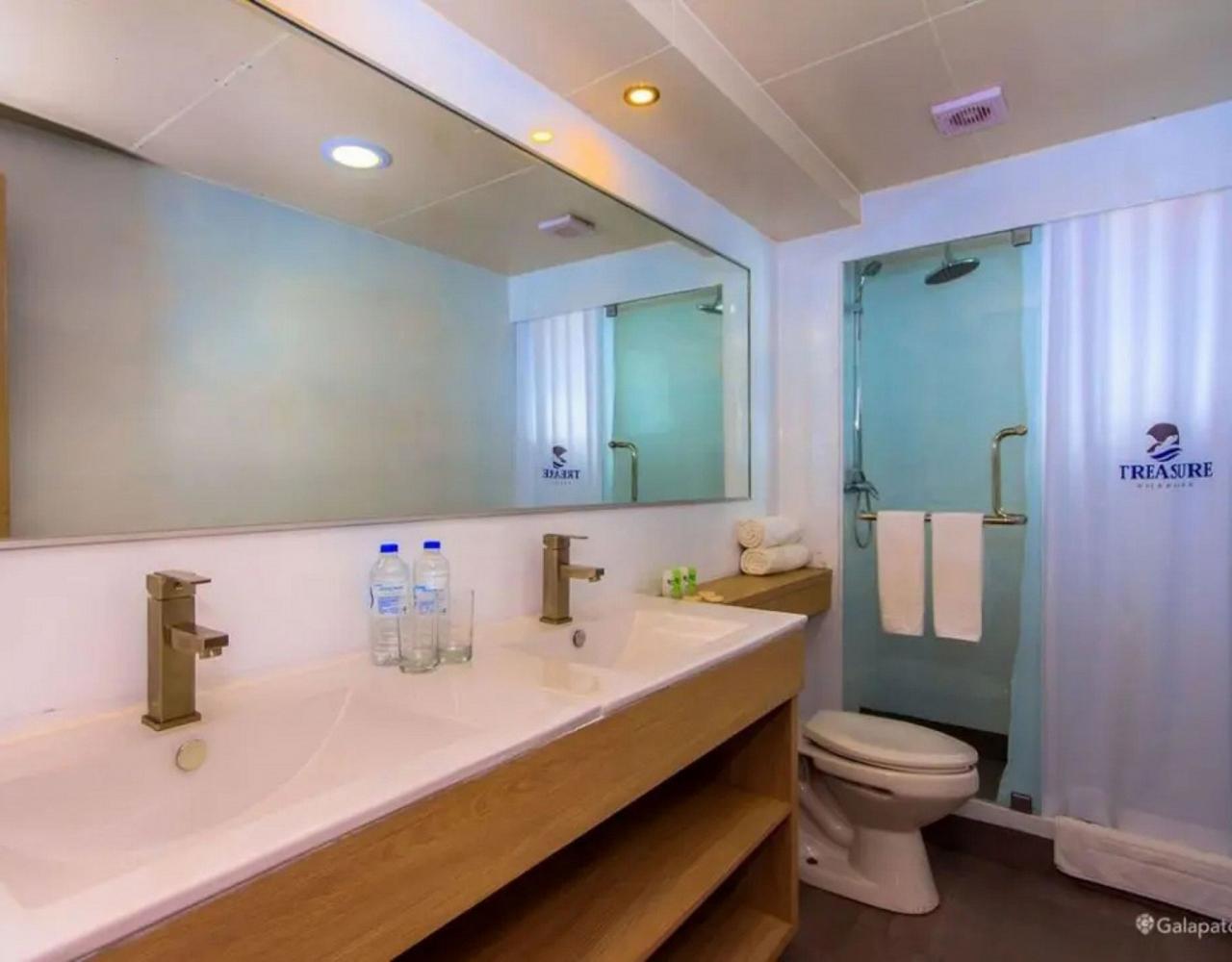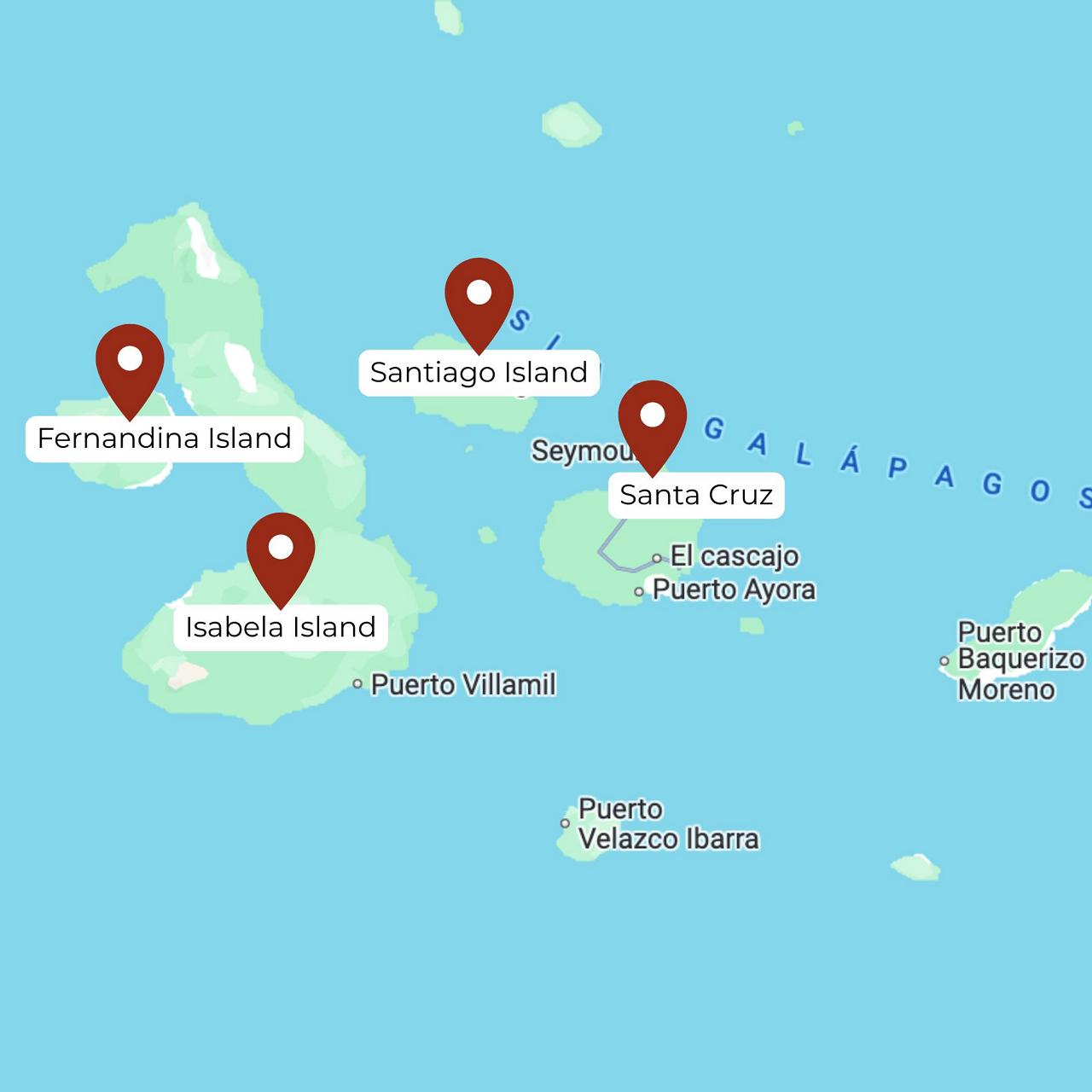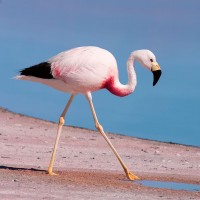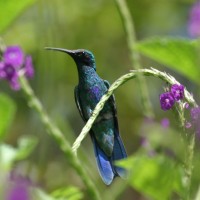- Overview
- Full Itinerary
- Photo Gallery
- Costing
- Travel Details
- Ship Information
- Trip Reports
- Map
- Know Before You Go
- Other Trips You May Like
Chart a course through the Galápagos Islands as you spend time in Ecuador’s most impressive volcanic archipelago with its fascinating mix of plants and animals. The wildlife here is absolutely intriguing and almost shockingly docile (and many species cannot be found anywhere else on Earth). It's not unusual to have to walk carefully over a Blue-footed Booby, or wait patiently for a young Sea Lion to awake from the comforts of your daypack that you left on the beach.
We cruise amongst some of the best islands in the chain, including Santa Cruz, Isabela, Fernandina, Rabida and Santiago.
NEW this year, we have chartered a lovely, small catamaran, Treasure of the Galapagos, to explore some of the finest islands in the central and western part of the archipelago. From Santa Cruz Island, we head out to explore remote areas on Isabela and Fernandino Islands, looping back through scenic Rabida and Santiago, so rich in diversity. This region has great biodiversity as the northwest ocean waters are richly-productive and in addition to Galápagos Penguin, Galapagos Hawk, and Flightless Cormorant, our time here often brings sightings of whales, sunfish, and dolphins. We see multiple species of the famous Darwin Finches, and large numbers of sea birds including the iconic Blue-footed Boobies.
Our Galápagos cruise is planned to leave a light footprint, and we support conservation throughout the voyage. There is simply no place like the Galápagos.
Please note:Terms & Conditions: Cruise payments are subject to the terms and conditions of the cruise operator, Andean Travel Company. These terms and conditions are primary over those of Naturalist Journeys.




Tour Highlights
- Cruise aboard a luxurious, private yacht
- Observe and photograph plentiful seabirds as they court, nest, feed, and care for young
- Challenge yourself to identify the famous Darwin’s finches
- Seek out endemic species: Galápagos Dove, Galápagos Penguin, Flightless Cormorant, Galápagos Hawk, the Galápagos form of Short-eared Owl, and Galapagos Mockingbird (to name a few)
- Spot animals like Sally Lightfoot Crab, Marine and Land Iguanas, Galapagos Sea Lions, and the massive Galápagos Tortoise
- Enjoy snorkeling or kayaking in quiet coves among active and colorful fish, and possibly dolphins, manta rays, and turtles
- Wonder at the islands’ volcanic geology and compare “old” and “new” islands
- Explore mangrove lagoons by small boat for an even more intimate experience
- Visit the Charles Darwin Research Station and learn about conservation efforts, including the control of introduced species like goats, rats, pigs, and cats




Trip Itinerary
Itineraries are guidelines; variations in itinerary may occur to account for weather, road conditions, closures, etc. and to maximize your experience.
Thurs., March 4 Arrivals in Quito
Welcome to Ecuador! Arrive at leisure today; you will be transferred to our hotel by our local operator. If you arrive in time, you can meet the rest of the group for dinner this evening to get to know each other.
Accommodations at the GO Quito Hotel (D)
Fri., March 5 City Day Trip or Antisana Day Trip
We have two choices for you today.
The first option is a tour of the stunning mountain city of Quito, Ecuador’s capital. Nestled into the Andes Mountains at an impressive 9350 feet above sea level, Quito will simply charm you. Today’s city tour includes plenty of important information about everyday life in modern-day Quito, as well as this beautiful equatorial city’s history. Perhaps we can indulge in a taste of the local empanadas!
Our second option today is a trip to the Antisana Ecological Reserve. Explore the high paramo, a tundra-like terrain with the stunning and snow-capped Antisana Volcano in view. Vistas here are on a grand scale, and several large lakes and ponds attract a variety of species. Our eyes are peeled for Andean Condor, very much at home here. We also look for Black-faced Ibis, Andean Lapwing, and a high-elevation hummingbird, the Andean Hillstar. Black-chested Buzzard Eagle and Carunculated Caracara are two birds of prey we can study, and we also note plant life that exhibits adaptations required to survive in these high elevation grasslands. With luck, we have splendid views of one of the most beautiful peaks in the Andes.
Accommodations at the GO Quito Hotel (B,L,D)
Sat., March 6 Flight to Baltra, Santa Cruz Island, Galapagos | Charles Darwin Foundation Center/Fausto Llerena Tortoise Breeding Center
The Galapagos Islands lie 600 miles off the coast of Ecuador. Our morning flight leaves Quito (and most often makes a stop in Guayaquil) before heading out to sea. This is a full-size plane. It is striking to see the islands from the air at the end of this two-hour flight—our Galapagos adventure awaits! We land at Seymour Airport, a “green” airport in keeping with the mission of conservation here, designed with re-purposed materials and operating on clean energy sources. On arrival bags are inspected by the Galápagos Biosecurity Agency quarantine staff and here we obtain the mandatory tourist transit card and entrance permits to Galápagos National Park. Stepping out into the warm island air, we may see our first of the Darwin’s finches right at the airport. The friendly crew from our ship greets us and by bus we cross over to Santa Cruz Island.
This afternoon we have a bit of time in the town of Puerto Ayora, visiting the Charles Darwin Foundation Center and its Fausto Llerena Tortoise Breeding Center. This makes a great introduction to ecology of the islands, and we learn more about the center’s important work to preserve populations of the varied types of Galapagos tortoise and land iguanas. As time permits, we walk from town through a mix of habitats: mangroves on the ocean side and shrub vegetation that can be good for birds. Smooth-billed Ani, Small, Medium, and Large Ground Finches, Common Cactus Finch, and with luck the large Vegetarian Finch may be present. We also keep our eyes peeled for Galapagos Flycatcher, Galapagos Mockingbird, and out to sea, Blue-footed Booby and Magnificent Frigatebird. The center has a trail that can also be good for birding as you observe the tortoises and iguanas.
We then board the ship, and enjoy the sunset and our first delicious dinner at we cast off for other parts of the island.
Sun., March 7 Santa Cruz Island: Eden Islet and Dragon Hill
This morning is a time of wonder, as on sea cliffs of Eden Islet off the northwest side of Santa Cruz Island, we find our first good numbers of seabirds including Blue-footed Boobies, Brown Pelicans, Nazca Boobies, and Magnificent Frigatebirds. We take a panga ride to observe them and may also find Lava Heron hunting in tidal pools and Green Sea Turtle swimming among mangroves. Marine Iguana are common on the rocks. The islet is only about 2000 feet in diameter, and can be a good snorkeling spot for those that wish to get into the water. Four or five times on the voyage we have the opportunity to snorkel, and your guides help you with gear and techniques as well as identification of the many rock reef fishes. Green Sea Turtle and Manta Ray may also be seen here.
We get back on board and motor away from this scenic tuff cone islet to visit our next spot, Dragon Hill. This part of Santa Cruz Island is named for Land Iguana, which feed on abundant Opuntia cactus. Learn more about conservation efforts to protect and rebuild this population. We watch the giants, and then stretch our legs on a trail through rocky terrain decorated by native Palo Santo trees to reach a viewpoint above a hyper-saline lagoon behind the beach. Look down on tracks made by American Flamingo, and scan for White-cheeked Pintail, shorebirds such as Black-necked Stilt and Whimbrel, and other species of birds including Yellow Warbler.
Typically we move to our next sites in the evenings, after dinner so we are in position for our outings the next day. Enjoy dinner on the open-air deck, and as night falls, enjoy the stars!
Mon., March 8 Isabela Island: White Tipped Reef Shark Canal near Tintoreras Islet | Salt Lagoons & Mangroves | Wall of Tears Historic Site | Tortoise Breeding Centre
Wake up to a striking volcanic landscape—other worldly! After breakfast, we take a panga ride to Tintoreras Islet, located in front of the village of Puerto Villamil, where we cross channels of clear water looking for Galapagos Penguin and Marine Iguana as well as noisy Galapagos Sea Lion. We also find basking White-tipped Reef Shark in the water, also called Tintoreras, hence the name of the area. We look for American Oystercatcher, Wandering Tattler, Ruddy Turnstone, Lava Gull, Brown Noddy, Great Blue and Striated Herons, and possible Yellow-crowned Night Heron.
In the ocean waters we watch for boobies and frigatebirds, as well as possible Galapagos Shearwater. Isabela is one of the largest islands in the Galapagos archipelago and one of great beauty and white sand beaches. In the afternoon, we go ashore to visit a salt lagoon with flamingoes and other species. The Wall of Tears is an island historic site, built by prisoners from 1945 to 1959, when Isabela used to be a penal colony. There is also a Tortoise Breeding Center here, an important part of the conservation program on the islands. We may have snorkeling options here or time to try out a kayak. Sunset is a good time to gather and afterward enjoy the evening meal. You could get used to this life!
Tues., March 9 Isabela Island: Moreno Point & Tagus Cove
Early in the morning, we explore another area of Isabela Island at Moreno Point, located on the west coast between volcanoes Sierra Negra and Cerro Azul, not far from Elizabeth Bay. Enjoy a walk on a trail through an eerie barren lava flow to a coastal lagoon where several species of birds can be found. The star attraction is our first chance to see Flightless Cormorant, endemic to the islands and a species that influenced Darwin’s thinking on the origin and evolution of species. We may also find Common Gallinule and Blue-winged Teal among the more abundant White-cheeked Pintail, and a number of shorebird species. Watch for Galapagos Martin and perhaps Elliot’s Storm-Petrel.
In the afternoon, head to Tagus Cove on a zodiac ride, where we have the opportunity to watch Blue-footed Booby as they plunge dive. We have another chance at finding Galapagos Penguin, Flightless Cormorant, and other sea birds. In the mangroves we have a chance at seeing Small Tree Finch or possibly Mangrove Finch (rare), and a variety of shorebirds including pretty Red-necked Phalarope. Hikers can opt to visit Darwin Lake, an uplifted ultra-saline lake saltier than the sea, with a chance to see graffiti on the cliffs of the cove, written by pirates, whalers, and buccaneers in past centuries. Views of neighboring Fernandino Island are impressive and at sea we may encounter Galapagos Petrel, Nazca Booby, or Band-rumped Storm-Petrel.
Wed., March 10 Fernandina & Isabela Islands: Espinoza Point & Vicente Roca Point
After breakfast, we land at Espinoza Point on the northwest shore of Fernandina Island, one of the youngest of the Galapagos islands with a still-active volcano. Fernandina is home to one of the largest populations of Marine Iguana on the entire archipelago, and landing here gives us another good chance to find Flightless Cormorant. Galapagos Hawk occur here as well and Galapagos Sea Lion abound.
During the afternoon, we head to Vicente Roca Point, a place we explore by panga. It’s a great place to observe geological formations including the volcanic tuff cones that form this island. On the edge of the Bolivar Channel is an important breeding site for Blue-footed and Nazca Boobies. Waters of this deep channel team with upwelling currents full of life and this is our best chance of the cruise to observe whales or massive Waved Albatross that feed in the rich waters.
There should be a chance to snorkel today, or just relax and enjoy the rugged beauty of the area. After dinner, we start a longer move back into the central islands to reposition for tomorrow’s explorations.
Thurs., March 11 Puerto Egas, Santiago Island | Red Beach, Rabida Island
Enjoy sunrise, always worth getting up for in the Galapagos! Today we go onshore at Puerto Egas (also called James Bay), located on the west side of Santiago Island. Here a black sand beach formed by volcanic tuff makes a great lounging spot for numerous Galapagos Sea Lion. You may return to find a young one sleeping on your lifejacket or shoes. There is an historic salt mine on this island, and a very picturesque shoreline, perhaps the best spot of our trip to find a variety of feeding shorebirds. Marine Iguanas and colorful Sally Lightfoot Crabs are plentiful and with luck we can find a few Galápagos Fur Seal.
After lunch, we land at one of the most photogenic of our stops, Rabida Island, known for its red sand beaches and lovely coastal lagoon behind the beach. On our walk we look for Green Warbler Finch, Common Cactus Finch, Galapagos Dove, Galapagos Mockingbird, and Galapagos Flycatcher along with birds of the lagoon habitat.
This evening we may feel a bit of melancholy as no one ever wants to leave this remote wildlife paradise. Tonight, we share highlights of the trip with fellow travelers and guides and enjoy a festive final dinner under the starlight.
Fri., March 12 Santa Cruz Island: Las Bachas Beach | Return from Balta Airport
On our final field trip, we visit scenic beaches of Las Bachas, coral sand beaches known to host nesting sea turtles. Barking Galapagos Sea Lion call and behind one of the beaches, there is a small brackish water lagoon. Watch for beautiful Swallow-tailed Gull, Lava Gull, Black-bellied Plover, Least and Western Sandpipers, and more. Say good-bye to Brown Pelican and Blue-footed Boobies, signature species of the islands.
We leave our ship here to drive across the island to the airport at Baltra for an afternoon flight back to Quito, again stopping in Guayaquil on the way. Those flying home this evening have time at the airport and there are plenty of shops and restaurants for you to pass the time. If you wish to stay on in Quito, or plan to stay on for our extension, we can help you book accommodations.
Cost of the Journey
The cost of the cruise is per person, based on occupancy: $TBD (for referece, 2025 pricing was $7995 DBL / $11,590 SGL) for main cabins. Master cabin cost is $TBD (for reference 2025 pricing was $9,495 DBL per person) (One Master Cabin is available and can only be sold with double occupancy).
Price includes:
- accommodations for 8 nights, all meals during the trip, airport assistance in Quito, all excursions with professional Galápagos guides, and miscellaneous program expenses, all crew and guide tips, park fee, and tourist card fee.
Price does not include:
- Round trip flight from Quito to Baltra, however this will be booked for you by our operator so we can travel as a group and added to your invoice, estimated at $500 per person.
- Items of a personal nature like: laundry, telephone charges, or optional activities.
- Your flight to Ecuador, or departure tax from Ecuador (for most this is built into your international airline ticket).
Terms & Conditions: Cruise payments are subject to the terms and conditions of the cruise operator, Andean Travel Company. These terms and conditions are primary over those of Naturalist Journeys.
Cancellation Terms:
151 days prior to departure - Full refund (less a $250 per person administrative fee)
150 - 91 days prior to departure - Refund less a 20% penalty
90 - 61 days prior to departure - Refund less a 40% penalty
60 days or less prior to departure - Full penalty, no refund
Travel Details
Arrival and Departure Airport: Mariscal Sucre International (UIO) in Quito
Arrival Details: Please plan flights to arrive March 4, 2027, at your leisure
Departure Details: Please plan flights to depart March 12, 2027, after 8:00 PM
Travel Tips: If you arrive early in Quito, we can book you an early night at a nearby hotel.
Entry Requirements: See "Essential Information" section under the "Know Before You Go" tab.
Ship Information
The Treasure of Galápagos is a first-class motor catamaran offering comfort and style while exploring the Galápagos. Spacious and stable, it accommodates just 16 guests, ensuring a personalized experience with expert guides.
Highlights:
- All cabins feature private balconies, air conditioning, private bathrooms with hair dryers, writing desks, and ample storage. Electrical outlets are 110V.
- Communal amenities include a jacuzzi, shaded outdoor lounge and bar, elegant indoor lounge, WiFi, and a reading room with a Natural History library.
- Dining features buffet-style Ecuadorian and international cuisine, with options for dietary needs if noted in advance.
- Snorkeling equipment provided and 4 double kayaks aboard.
Cabin Options on Treasure of Galápagos
Master Suite: King-size bed, two private balconies (bedroom and living room sides), private living room, private bathroom, adjustable air conditioning, security box, and plasma TV.
- Size: 36 m²
- Max Occupancy: 4
Standard Double Cabins: Double bed, private balcony, individually controlled air conditioning, private bathroom, writing desk/vanity, and ample storage.
- Size: 18 m²
- Max Occupancy: 2
Standard Single Cabins: Double bed, private balcony, individually controlled air conditioning, private bathroom, writing desk/vanity, and ample storage.
- Size: 18 m²
- Max Occupancy: 2
Ship Photos
Browse below for trip reports and species lists from past versions of this and other tours from this destination.
Galapagos
- January 2012
- May 2016
- January 2017
- November 2017
- February 2018
- November 2018
- February 2019
- November 2019
- February 2020
- November 2021
- February 2022
- November 2022
- January 2023
- November 2025
Essential Information +
Pace & Protocols +
Packing List +
Suggested Reading List +
Useful Links +
Photo credits: BANNERS: Galapagos Scenic (NJ Stock), Sally Lightfoot Crab (NJ Stock), Magnificent Frigatebird (NJ Stock), Galapagos Tortoise (NJ Stock), Galapagos Hawk (NJ Stock), Sea Lions Snorkeling (NJ Stock) THUMBNAILS: Magnificent Frigatebird (NJ Stock), Galapagos Scenic (NJ Stock), Blue-footed Booby (NJ Stock), Short-eared Owl (NJ Stock), Land Iguana (NJ Stock), Galapagos Penguin (NJ Stock), Waved Albatross (NJ Stock), American Flamingo (NJ Stock)







